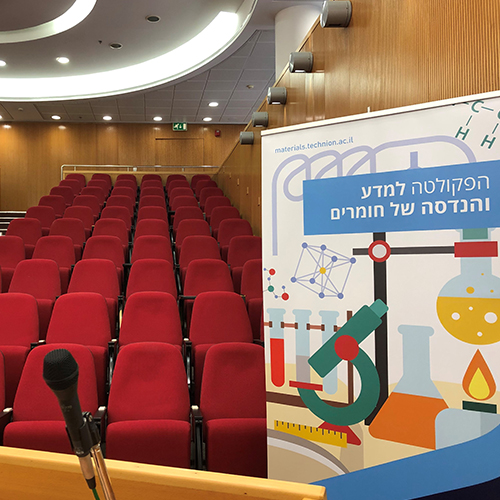
Mrs. Hanna Kuperman Benedik - Ph.D. Candidate
28/12/2025
david Wang Auditorium, 3rd Floor, Dalia Maydan Bldg.
13:30
Molybdenum disulfide (MoS2) monolayers are promising candidates for next-generation transistor technologies; however, their electronic performance is strongly dependent on the presence and configuration of defects, particularly sulfur vacancies. While previous studies have linked vacancy concentration to conductivity, the specific influence of spatial distribution remains complex and not fully understood. This seminar presents a comprehensive quantum mechanical study examining how both the concentration and specific arrangement of sulfur vacancies modulate charge transport across monolayers. The research methodology integrates Density Functional Theory (DFT) for electronic structure analysis, Tight-Binding (TB) theory for Hamiltonian construction, and the Nonequilibrium Green’s Function (NEGF) formalism combined with Landauer-Büttiker theory to calculate charge transport. Additionally, a Design of Experiments (DOE) approach was employed to statistically assess the impact of defect configurations on current flow.
Our findings reveal that while higher vacancy concentration generally leads to increased electron permeability, the geometric arrangement of these defects plays a critical role. We observed that “line” vacancy arrangements result in significantly higher current values compared to “cluster” formations. Moreover, distributing vacancies across both atomic sulfur layers—rather than restricting them to a single layer—substantially enhances electronic conductivity. These improvements correlate with reductions in ionization potential, band gap energy, and average Mo–S bond lengths. These insights provide a predictive framework for defect-engineered charge transport, enabling the rational design of advanced functional materials with customized electronic properties through controlled structural defects.


